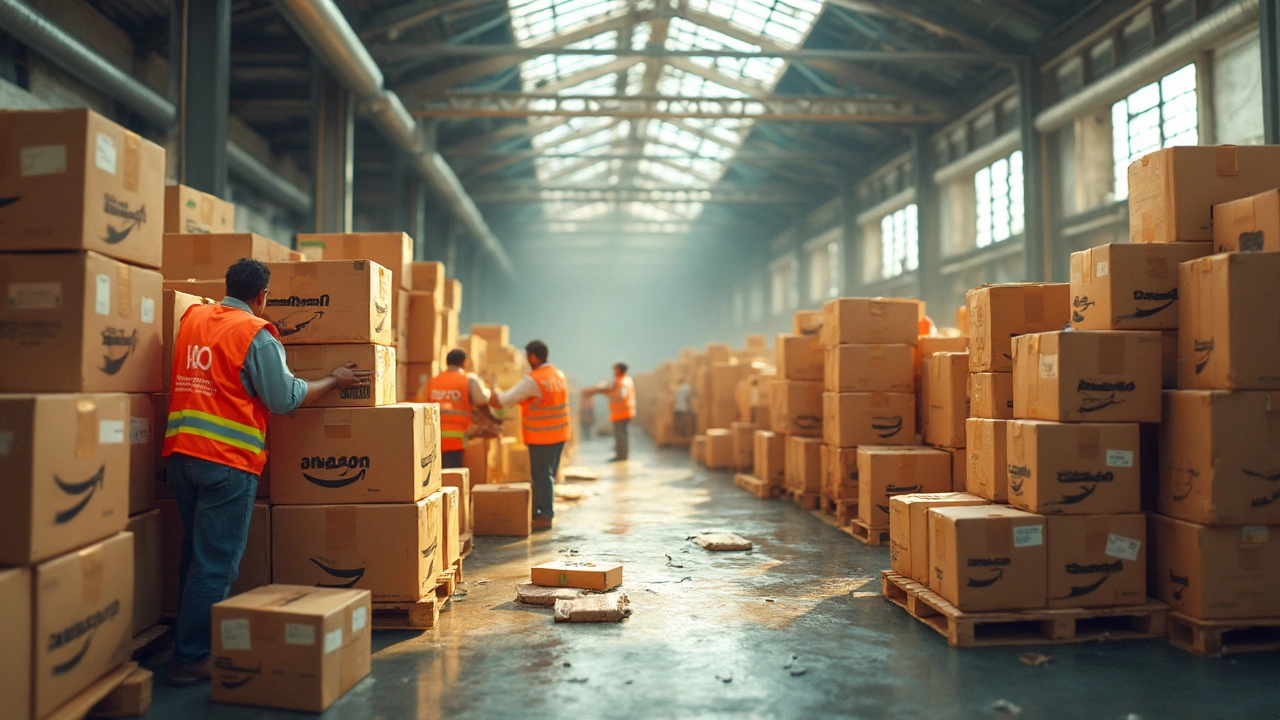Amazon Pallets: What Every Seller Needs to Know
If you sell on Amazon, you’ll soon hear about pallets. They’re the big wooden platforms that hold multiple boxes, making it easier to move inventory from the warehouse to the fulfillment center. Understanding how Amazon handles pallets can save you time, money, and headaches.
First, know the size standards. Amazon requires a 48" x 40" pallet, usually made of hardwood or a sturdy plastic version. Each pallet can hold up to 1,500 lbs, but the exact weight limit depends on the carrier you choose. Overloading a pallet can lead to damage, extra fees, or even rejection at the fulfillment center.
How to Pack Your Pallet Right
Start with a solid base layer of boxes, all facing the same direction. This keeps the load stable and makes it easier for forklift operators. Use shrink wrap or stretch film to secure the boxes together; a tight wrap prevents shifting during transport. If you have fragile items, add a layer of cardboard or foam between boxes for extra cushioning.
Label each pallet clearly. Amazon wants a barcode that includes the pallet ID, ship-from address, and the expected contents. Place the label on the side of the pallet where it’s visible without moving the load. A clear label speeds up the check‑in process and cuts down on misplacements.
Choosing the Right Shipping Partner
Not all carriers treat Amazon pallets the same way. Some offer dedicated Amazon freight services, which include pre‑approved pallets, scheduled pickups, and tracking that syncs with Amazon’s system. Others charge per‑pallet fees that can add up quickly. Compare rates, pickup windows, and any extra handling fees before you commit.
StockOne Logistics can help you pick the best carrier for your needs. With our network of partners across India, we match your shipment size, destination, and budget to the most reliable service. We also handle pallet labeling, wrap, and documentation, so you focus on selling.
Another cost‑saving tip is to consolidate shipments. If you have multiple SKUs going to the same fulfillment center, load them onto one pallet instead of several smaller ones. Fewer pallets mean lower freight charges and less handling at the warehouse.
Keep an eye on Amazon’s pallet acceptance schedule. They have specific cut‑off times for inbound shipments, and missing them can delay your inventory’s arrival. Plan your pick‑up at least a day earlier to avoid last‑minute rush fees.
Finally, track your pallets in real time. Most carriers provide a tracking number that links to Amazon’s inbound portal. If a pallet goes missing or is delayed, you’ll know immediately and can alert Amazon to prevent stockouts.
By following these simple steps—using the right pallet size, packing securely, labeling clearly, picking a good carrier, and consolidating loads—you’ll keep your Amazon inventory moving smoothly. Need a hand with pallet logistics? Contact StockOne Logistics and let us take the heavy lifting off your plate.
Amazon Pallets: Real or Hype in the Pallet Delivery Game?
Heard about 'Amazon pallets' and wondered if they're legit or just hype? This article digs into whether Amazon pallets are a real thing, how they work, and what you need to know before buying or shipping them. We’ll break down what’s actually in those pallets, how delivery works, and what surprises to watch for. If you’re thinking about reselling or just curious about the business, you’ll get practical, no-nonsense info here. You’ll also find handy tips about delivery and real risks most buyers overlook.
Read More